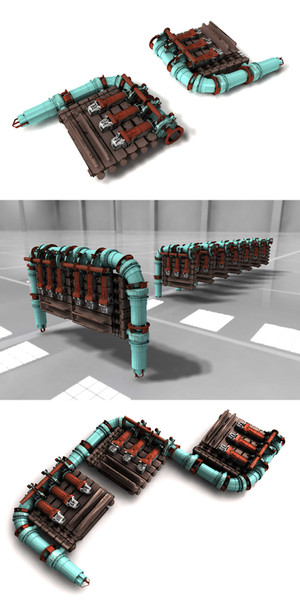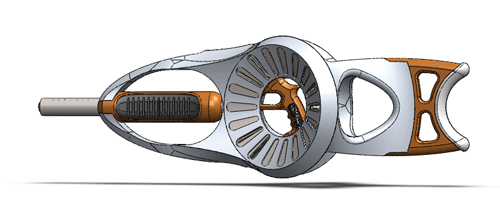HOME | DD
 MSgtHaas — FTL Drive
MSgtHaas — FTL Drive

Published: 2013-08-04 22:53:39 +0000 UTC; Views: 3724; Favourites: 32; Downloads: 29
Redirect to original
Description
FTL DriveRelated content
Comments: 9

added to 3D concepts in Sci-fi Archives sci-fi-archives.deviantart.com…
👍: 0 ⏩: 0

Could I just borrow one of those? I'd like to visit Alpha Centauri within my lifetime.
👍: 0 ⏩: 1

It'll take only 5 or 6 years with a relativistic rocket. Get going fast enough, and time dilation plays an important role. See "Project Valkyrie" for a fairly practical concept. Such a starship, accelerated to 97% of lightspeed, could reach anywhere in our galaxy in about 120,000 Earth years, but the crew would experience only about 30 years. So it's actually quite possible to visit the stars without needed a generational ship, or spending thousands or millions of years in stasis.
As far as I know, there is only one movie example of a realistic interstellar starship built to these practical design standards, working strictly within the known laws of physics... and that is the spaceship in the opening scenes of James Cameron's Avatar. Kudos for him doing the research!
👍: 0 ⏩: 1

120,000 years of events on Earth would overwhelm a passenger on a ship that boarded at 10 and just turned 40. I read about time dilation when it was used in the Ender books, when Ender and his sister traveled to a conquered colony, and when they reached the colony they were still young but decades had passed on Earth. It's just such an incredibly odd concept to think about.
👍: 0 ⏩: 1

Not so wild if it's a one-way trip, and the travelers aren't planning on returning to future-Earth.
This only really becomes an issue on such deep-space shots that take so long; a local trip of a few dozen light-years would not be significantly overwhelming, as you put it.
In any case, the time needed to visit any star system with a relativistic rocket is only a few years longer than its distance in light-years, provided your rocket can maintain the acceleration curve. Physics says matter can't go faster than light in this universe, but matter can certainly get very close to such speeds (as already proven in particle accelerators)... and above about 50% of lightspeed, Newtonian physics falls apart, and you need Einstein's relativistic physics to explain what's happening. Length contracts, time slows down relative to the rest of the universe, and the stars are within reach.
The only really difficult part is in building a rocket that can haul enough fuel to make such a journey. The acceleration and deceleration phases at each end of the trip would have to be nearly a year each, while the rest of the trip is within a few percentage points of lightspeed. There are several theoretical rocket types that have exhaust at near-lightspeed velocities, which is a critical requirement. Acceleration is harder, because you have to also accelerate all the fuel you will eventually burn during your trip, which you won't have to decelerate later. Even if you're using antimatter to tubocharge your exhaust (and you would have to, since it's the most efficient fuel), the fuel/payload ratio for a trip would need to be around 800 to 1. If you could harness a significant fraction of your reactant mass from interstellar hydrogen, that would help greatly... but with an average of just 1 atom per cubic centimeter in interstellar space, your Bussard collector would have to cut a swath an AU in diameter to have a practical yield -- it'd probably be easier to just bring all your fuel with you.
Not impossible figures, but they aren't for the casual tourist trip. The fuel problem is why theories like the Alcubierre metric tensor warp drive are so enticing... and why the golden age of space travel probably can't arrive until such theories move into practical reality.
👍: 0 ⏩: 0




























